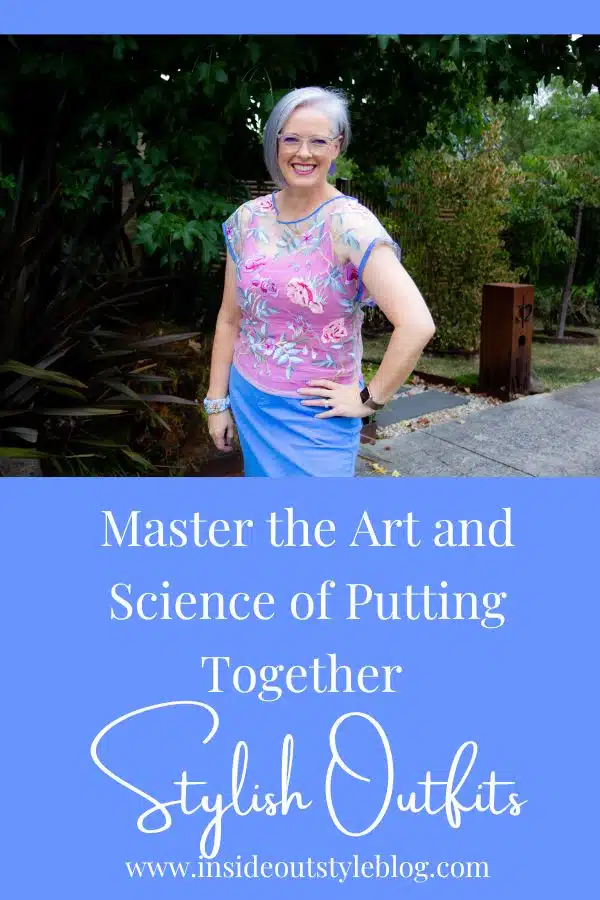



Do you struggle to put stylish outfits together? You can still join my Outfit Masterclass Integration Week Challenge – which runs this week 17 – 21 July and learn even more tips on putting outfits together – find out more and join here.
If so you are not alone! In fact, in this video I’m answering a reader’s question about how to put stylish outfits together.
&iv;&modestbranding;&rel;&autohide;&playsinline;&autoplay;
Are you tired of staring at your closet, feeling overwhelmed and anxious about putting together stylish outfits? Do you often find yourself trying on multiple pieces of clothing only to end up feeling like you have nothing to wear? If these are common issues for you, fret not! Let’s explore effective strategies to help you coordinate your wardrobe effortlessly. By understanding the principles of coordination, you’ll be able to create stylish outfits that reflect your personal style and make you feel confident. Let’s dive in!
Coordinating outfits doesn’t have to be a daunting task. By following a few key principles, you can simplify the process and create stylish looks with ease. It’s essential to consider factors such as volume, lines, shapes, and the level of refinement when putting together an outfit. Let’s explore each of these principles in detail.
Understanding Your Wardrobe Composition
Before we delve into coordination techniques, let’s take a moment to reflect on your wardrobe. How have you been buying your clothes? Do you have a variety of pieces that can work together, or is your wardrobe filled with items that don’t quite match? Knowing your wardrobe composition is key to solving the “nothing to wear” dilemma. Consider two scenarios: the hero buyer’s wardrobe and the voluminous vs. slimmer garments dilemma.
The Hero Buyer’s Wardrobe
Imagine entering a closet overflowing with garments, yet the owner claims to have nothing to wear. This perplexing situation often arises when individuals fall victim to the allure of hero pieces—standout items that fail to coordinate with the rest of the wardrobe. What the Hero Buyer needs to do is look through their wardrobe for items that can be worn with their hero pieces, the basics that make the hero shine. These can be things like a pair of well-fitting jeans, or a variety of tops in colours that flatter your complexion but don’t have details like batwing sleeves, or frills so that they can easily be layered underneath jackets or other garments. Now basics don’t have to be boring, but for any layering piece, it does need to be practical!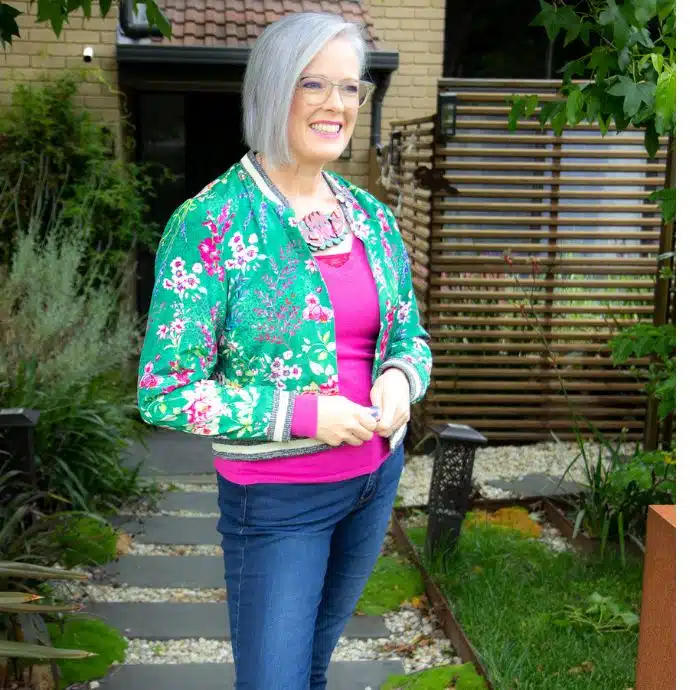
Here I’ve coordinated a hero bomber jacket with a solid coloured top and basic jeans so that the hero isn’t overwhelmed.
The Voluminous vs. Slimmer Garments Dilemma
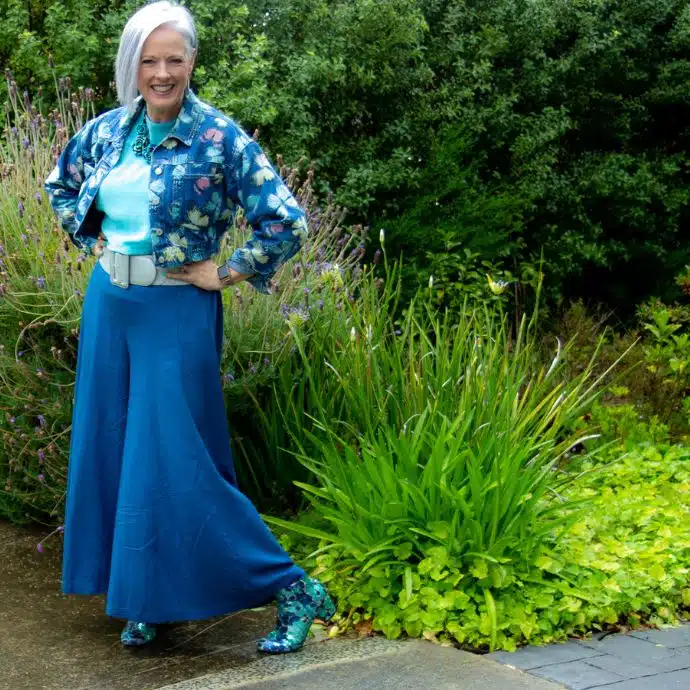
Voluminous pants require fitted tops
On the other hand, we encounter wardrobes where every piece has a lot of volume. While voluminous garments can be chic, pairing two such pieces together risks overwhelming the wearer, particularly those with a petite frame. By adhering to the principle of volume, we can create harmonious ensembles by pairing a voluminous garment with a slimmer one, striking the perfect balance for a flattering silhouette.
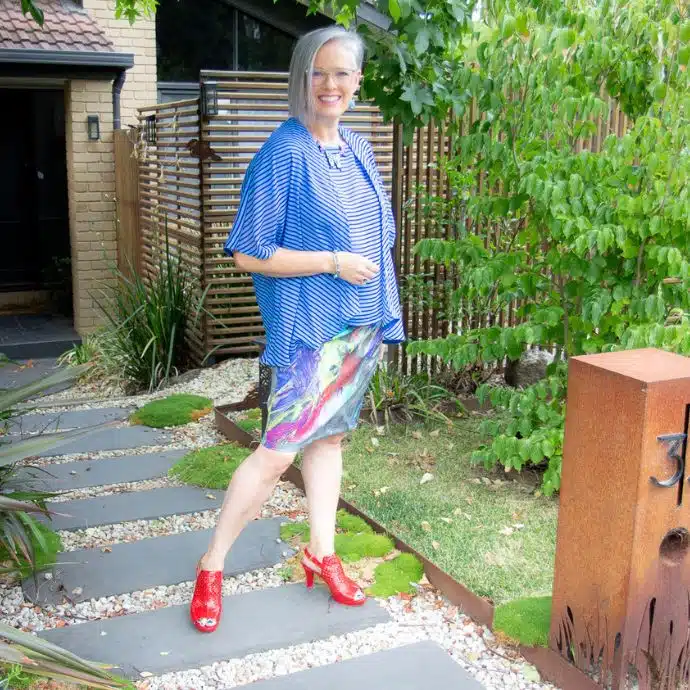
This loose voluminous kimono needs a slim fitted skirt to create balance
So if you’ve bought too many voluminous garments, it’s worth looking at your existing clothes to see what kinds of fitted things you need that will make your voluminous garments work. Think of slim pants to go with a voluminous top, or a fitted knit top to go with your wide-leg jeans or pleated midi-skirt.
The Principles of Coordination
To effectively coordinate your outfits, there are four principles you should consider:
- Principle of Volume: Think about the proportion of your garments. Pair one voluminous piece with a slimmer one to create balance. If everything in your wardrobe is overly voluminous, it can be challenging to create cohesive outfits. Consider adding slimmer bottoms or tops to balance out your existing pieces.
- Principle of Related Lines: Take note of how the lines on your garments interact. Do they complement each other? For example, if you’re wearing a floral blouse, opt for accessories with rounded shapes, like hoop earrings. By aligning the lines and shapes, you’ll achieve a harmonious look.
- Principle of Related Shapes: When coordinating different elements of your outfit, such as jewelry or accessories, consider the shapes involved. Avoid mixing conflicting shapes that don’t relate to each other. Instead, seek connections between the shapes in your outfit, such as matching the shape of your necklace to the neckline of your garment.
- Principle of Refinement: Categorize your clothes into different levels of formality or refinement. From formal business attire to casual everyday wear and outdoor leisure clothing, each level has its own style requirements. Ensure that the pieces within a particular level work well together. Mixing incompatible refinement levels can result in a disjointed outfit.
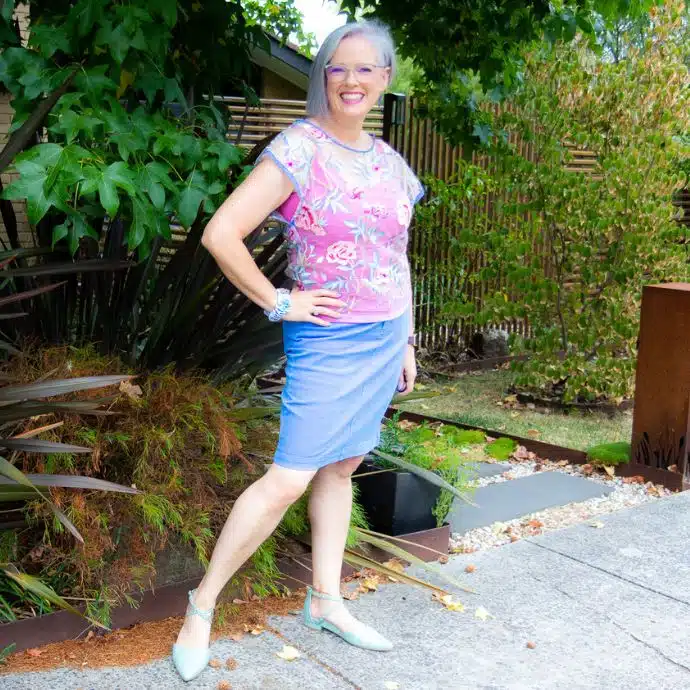
This hero patterned top needs a plain bottom so it stays the feature
The Journey to Style Education
To fully grasp the art of outfit coordination, we must embark on a journey of style education. Discovering what works for us on an individual level is crucial, as personal preferences and body types vary. Investing in resources like the Outfit Masterclass can equip you with the knowledge needed to identify your unique style flavors and create outfits that truly resonate with your personality and lifestyle.
Now that you understand the principles of coordination, it’s time to put them into action. Consider these additional tips:
- Assess your current wardrobe: Take a closer look at your clothes and evaluate if they align with the principles of coordination. Are there any gaps or imbalances? Determine if you need to shop for specific items that will enhance your outfit combinations.
- Seek style education: Expanding your style knowledge is the key to effortless coordination. Educate yourself about color palettes, body shapes, and personal style. This knowledge will empower you to make informed choices when shopping and putting outfits together.
- Consider a style program: If you’re serious about improving your style and wardrobe coordination, consider enrolling in a style program or course. These resources offer in-depth guidance tailored to your individual needs. Look for programs that cover topics like color analysis, body shape styling, and outfit creation. 7 Steps to Style includes all these elements of style and will give you the knowledge you need to become empowered to make the right choices for you.
- Embrace your uniqueness: Remember, personal style is just that—personal. What works for someone else may not necessarily work for you. Embrace your individuality and explore how you can express yourself authentically through your outfits.
- Reflect and refine: Regularly assess your wardrobe and evaluate what’s working and what isn’t. Take note of outfits you love and those that make you feel less confident. Use this self-reflection to refine your style choices and build a wardrobe that truly represents you.
Unlocking the art of putting stylish outfits together requires an understanding of coordination principles, an appreciation for related shapes and lines, and an eye for refinement. Armed with this knowledge, we can bid farewell to the anxiety of dressing up and embrace the joy of curating outfits that reflect our true selves. Remember, style education is the key to unlocking the best version of you, so dive in, explore, and revel in the power of a well-coordinated wardrobe.
How to Build Your Style Muscles and Become More Stylish
How to Train Your Eye To Create Stylish Outfits
